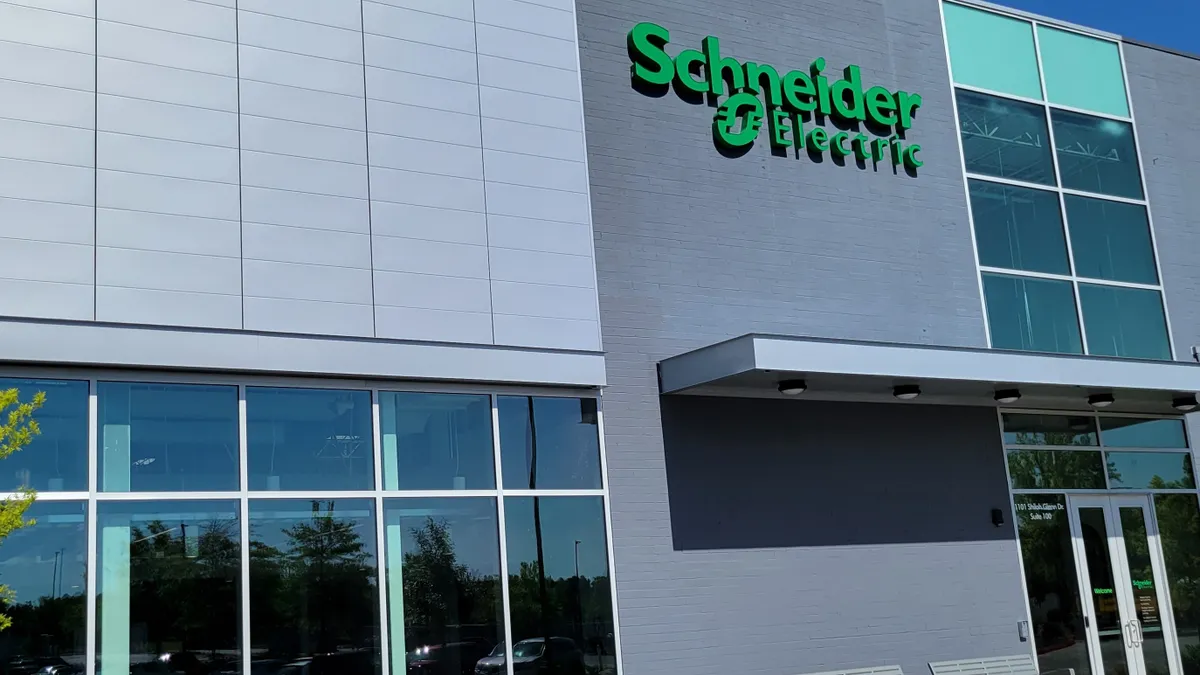Dive Brief:
- Schneider Electric is committing to invest in a portfolio of clean energy projects in Texas, using a tax credit transfer agreement for solar and battery storage systems developed and operated by Engie North America, per a Tuesday news release.
- The contracted projects, slated to be operational through this year, will enable Schneider Electric to get closer to its 100% renewable energy goal in North America and reduce its scope 2 greenhouse gas emissions, the company said. This, in turn, will help its clients and partners to reduce their scope 3 emissions, John Powers, vice president of cleantech and renewables at Schneider Electric’s sustainability business, told Facilities Dive.
- The transferability clause, made possible by the IRA, enables the transfer of eligible federal tax credits to third-party buyers in exchange for cash, according to the U.S. Internal Revenue Service. Suppliers and property owners operating in the built environment and paying U.S. taxes can reduce their tax burden by investing the amount they owe in taxes in clean energy projects, after which they can reinvest the associated returns in decarbonization, Powers said.
Dive Insight:
Schneider Electric said it has seen a growing demand for off-site and on-site renewable energy sources and microgrid technologies that draw on benefits under the IRA. The tax credit transfer opportunities structured by Schneider’s advisory team allow companies to cut their scope 2 emissions, garner favorable risk-adjusted returns on investment and ramp up their progress toward decarbonization goals, according to the release.
“Many of our clients are starting to look at tax credit transfers as a way to support clean energy technologies,” Powers told Facilities Dive. The ROI from capital investments in projects that offer tax credits could not only lead to the buildout of new projects, but also provide tax savings, which Powers says companies can then funnel toward decarbonization efforts.
“In the case of Schneider, we used tax savings to purchase a 10-year strip of renewable energy credits to lower our scope 2 emissions across North America. We’re buying RECs generated by these solar farms over 10 years as well as being a tax investor to give [the developers] the capital to build the projects,” Powers said.
The IRA includes over 60 provisions for climate and energy initiatives, amounting to over $400 billion in spending over the next decade, according to a Credit Suisse report. Buildings account for roughly 13% of that spending, according to estimates from the Congressional Budget Office, with that funding mainly directed toward energy efficiency upgrades and incentives for green building developments, Credit Suisse says.
Emission reporting, particularly of scope 3 emissions, has been challenging for many organizations, with large industry players like Microsoft and Ikea USA pointing to a disconnect between their scope 1 and 3 emission disclosures, and what they see in their supply chains. In many cases, calculating scope 3 emissions is difficult because companies need to talk to their partners, vendors and suppliers to ensure they are reducing their emissions as well, San Jose Downtown Association CEO Alex Stettinski told Facilities Dive.
Schneider’s efforts to rein in its scope 1 and scope 2 emissions is tantamount to its customers’ ability to reduce scope 3 emissions, Powers said.
Schneider Electric and Engie have worked together on multiple projects since 2017, facilitating the procurement of renewable energy through virtual power purchase agreements totaling over 1.6 gigawatts in North America, the news release said.
“We’re still in [the] early days of tax credit transfer agreements and Engie was able to supply us with RECs, which [is] critical to us reducing our scope 2 emissions,” Powers said.
To help suppliers determine and reduce their emissions, Schneider, through its Zero Carbon Project, has drawn more than 1,300 supplier participants who have undergone eight technical training sessions on decarbonization. Schneider says it has a goal of cutting 50% of scope 1 and scope 2 emissions across supplier operations by next year.














